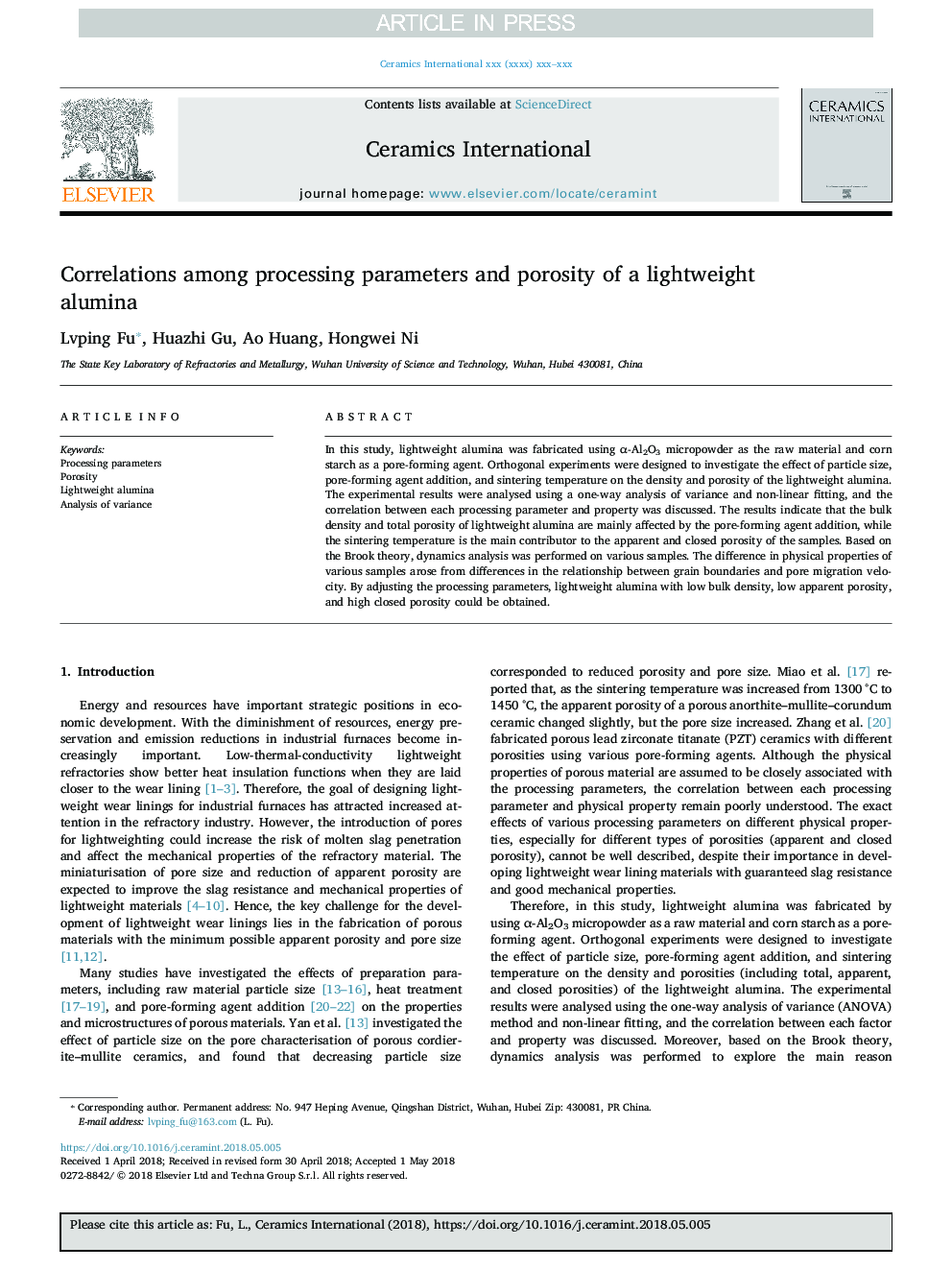| Article ID | Journal | Published Year | Pages | File Type |
|---|---|---|---|---|
| 7886713 | Ceramics International | 2018 | 6 Pages |
Abstract
In this study, lightweight alumina was fabricated using α-Al2O3 micropowder as the raw material and corn starch as a pore-forming agent. Orthogonal experiments were designed to investigate the effect of particle size, pore-forming agent addition, and sintering temperature on the density and porosity of the lightweight alumina. The experimental results were analysed using a one-way analysis of variance and non-linear fitting, and the correlation between each processing parameter and property was discussed. The results indicate that the bulk density and total porosity of lightweight alumina are mainly affected by the pore-forming agent addition, while the sintering temperature is the main contributor to the apparent and closed porosity of the samples. Based on the Brook theory, dynamics analysis was performed on various samples. The difference in physical properties of various samples arose from differences in the relationship between grain boundaries and pore migration velocity. By adjusting the processing parameters, lightweight alumina with low bulk density, low apparent porosity, and high closed porosity could be obtained.
Related Topics
Physical Sciences and Engineering
Materials Science
Ceramics and Composites
Authors
Lvping Fu, Huazhi Gu, Ao Huang, Hongwei Ni,
